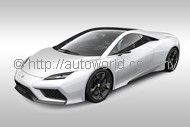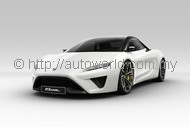Group Lotus – Major Transformation in Progress
Group Lotus – which is the company that manufactures Lotus cars such as the Elise, Exige and Evora, amongst others, is set to transform from a company making small sports cars to take on the bigger boys like Maserati, Porsche and Aston Martin by year 2015. In an informal discussion with Proton’s management (Proton are the owners of Lotus Group), it was divulged that as far back as a year ago, in 2009, it was decided that Lotus was to move up from being a company making niche, track focussed small cars that appeals only to a small segment of the industry, into one that makes luxury cars for a wider segment – this transformation is to take place in the next five years, moving from making around 2,000 cars a year to around 6,000 to 7,000 cars a year, a three-fold increase.
In order to strengthen the Lotus brand, the Lotus Group will concentrate on developing premium cars with features that will appeal to the target market, which is the upper echelon of successful people (with bigger cheque books and higher affordability), and at the same time, court these potential customers on a one-to-one basis to enhance the brand relationship with engaging activities such as customer events. At the same time, Lotus Group will work on strengthening the brand presence and mindshare through motorsports activities – hence the sponsorship of the Lotus Renault GP Formula team, announced today (see related article in Autoworld.com.my).
We can already see part of this transformation in the five super cars unveiled at the recent Paris Motor Show, also highlighted elsewhere in Autoworld.com.my.
Lotus has a long established name in motorsports, particularly in Formula 1. Lotus innovations transformed Formula 1 on various occasions in the past – some notable ones are:-
1) Lotus developed one of the very first mid-engined race cars in 1960.
2) In 1962, lotus developed the monococque body for the F1 car.
3) Lotus was the first to build an F1 car with wings in 1968.
4) In 1969, Lotus introduced a Four-wheel-drive car for F1.
5) In 1976, Lotus introduced the first ground effect F1 car.
6) Lotus developed the first carbon fibre F1 car in 1981.
7) The first active suspension F1 car was developed in 1987.
Many of the names we are familiar with, plus some which the younger ones today may not know, made their reputations through victories in Lotus built cars. In addition to seven F1 Constructor tiles, the drivers that rose to fame are Jim Clark (1963, 1965), Graham Hill (1968), Jochen Rindt (1970), Emerson Fittipaldi (1972, 1973), Mario Andretti (1978), and the first victories for young Ayrton Senna in 1985.
The decision for Group Lotus to go into Formula 1 sponsorship and partnership with Renault to form the Lotus Renault GP racing team is based purely on a business decision to venture into motor sport to build the Lotus brand, and other benefits in terms of technology transfer and platform/drive train sharing between Proton and Renault/Nissan. Details are ‘fuzzy’ but there is talk of a ‘D’ class sedan and a ‘K’ class car in the pipeline.





























